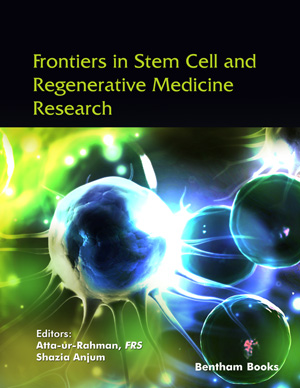
Abstract
Bone tissue is composed of organic minerals and cells. It has the capacity to heal for certain minor damages, but when the bone defects surpass the critical threshold, they need fixing. Bone regeneration through natural and synthetic biodegradable materials requires various steps, such as manufacturing methods and materials selection. A successful biodegradable bone graft should have a high surface area/ volume ratio, strength, and a biocompatible, porous structure capable of promoting cell adhesion, proliferation, and differentiation. Considering these requirements, the electrospinning technique is promising for creating functional nano-sized scaffolds. The multi-axial methods, such as coaxial and triaxial electrospinning, are the most popular techniques to produce double or tri-layered scaffolds, respectively. Recently, stem cell culture on scaffolds and the application of osteogenic differentiation protocols on these scaffolds have opened new possibilities in the field of biomaterials research. This review discusses an overview of the progress in coaxial and triaxial technology through biodegradable composite bone materials. The review also carefully elaborates the osteogenic differentiation using stem cells and their performance with nano-sized scaffolds.
Graphical Abstract
[http://dx.doi.org/10.1021/acsnano.0c03981] [PMID: 32678581]
[http://dx.doi.org/10.3390/nano10010016] [PMID: 31861582]
[http://dx.doi.org/10.1080/09205063.2020.1849922] [PMID: 33175667]
[http://dx.doi.org/10.1016/j.nano.2020.102353] [PMID: 33421622]
[http://dx.doi.org/10.1016/j.msec.2019.110497] [PMID: 32228962]
[http://dx.doi.org/10.1016/j.carbpol.2019.115658] [PMID: 31887899]
[http://dx.doi.org/10.1039/D0TB00271B] [PMID: 32211735]
[http://dx.doi.org/10.1016/j.mtcomm.2020.101561]
[http://dx.doi.org/10.1039/C6RA16986D]
[http://dx.doi.org/10.1007/s40097-016-0189-y]
[http://dx.doi.org/10.1021/acsami.0c05740] [PMID: 32628010]
[http://dx.doi.org/10.1016/j.polymer.2020.122794]
[http://dx.doi.org/10.4172/2155-9538.1000121]
[http://dx.doi.org/10.3390/catal12010009]
[http://dx.doi.org/10.3390/polym12122896] [PMID: 33287236]
[http://dx.doi.org/10.1016/S0032-3861(03)00616-5]
[http://dx.doi.org/10.5772/intechopen.70149]
[http://dx.doi.org/10.1002/smll.200400056] [PMID: 17193354]
[http://dx.doi.org/10.1002/jcp.29029] [PMID: 31250436]
[http://dx.doi.org/10.1021/acs.biomac.9b00451] [PMID: 31117353]
[http://dx.doi.org/10.3390/membranes8030062] [PMID: 30110968]
[http://dx.doi.org/10.1016/j.apmt.2019.06.015]
[http://dx.doi.org/10.1002/mabi.202100153] [PMID: 34117836]
[http://dx.doi.org/10.3390/polym13244368] [PMID: 34960918]
[http://dx.doi.org/10.3390/ma15072494] [PMID: 35407826]
[http://dx.doi.org/10.1007/s10856-021-06495-w] [PMID: 33683483]
[http://dx.doi.org/10.1016/j.ejps.2021.105768] [PMID: 33607242]
[http://dx.doi.org/10.1007/s12033-021-00311-0] [PMID: 33689142]
[http://dx.doi.org/10.1007/s13233-021-9028-1]
[http://dx.doi.org/10.1080/10667857.2021.1959216]
[http://dx.doi.org/10.3390/polym13111740] [PMID: 34073347]
[http://dx.doi.org/10.1021/acs.chemrev.8b00593] [PMID: 30916938]
[http://dx.doi.org/10.1080/10426914.2017.1388523]
[http://dx.doi.org/10.1039/D1RA04176B] [PMID: 35479869]
[http://dx.doi.org/10.3390/pharmaceutics13020286] [PMID: 33671624]
[http://dx.doi.org/10.1007/s00289-021-03591-3]
[http://dx.doi.org/10.1021/acsami.1c04104] [PMID: 33977710]
[http://dx.doi.org/10.1002/aenm.202000845]
[http://dx.doi.org/10.1016/j.jiec.2020.09.016]
[http://dx.doi.org/10.3390/nano11061501] [PMID: 34204161]
[http://dx.doi.org/10.1016/j.jhazmat.2021.125043] [PMID: 33485235]
[http://dx.doi.org/10.1016/j.jaerosci.2021.105754]
[http://dx.doi.org/10.3390/polym13040662] [PMID: 33672211]
[http://dx.doi.org/10.1007/s42114-021-00230-3] [PMID: 33748671]
[http://dx.doi.org/10.1016/j.polymer.2021.124378]
[http://dx.doi.org/10.1177/2041731412443530] [PMID: 22511995]
[http://dx.doi.org/10.1155/2018/3651480] [PMID: 30538809]
[http://dx.doi.org/10.1016/j.msec.2020.111547] [PMID: 33255098]
[http://dx.doi.org/10.1016/B978-0-08-100907-9.00003-9]
[http://dx.doi.org/10.1016/j.msec.2021.111975] [PMID: 33812603]
[http://dx.doi.org/10.1016/j.carbpol.2020.116477] [PMID: 32532400]
[http://dx.doi.org/10.1016/j.reactfunctpolym.2021.104895]
[http://dx.doi.org/10.1016/B978-0-08-102999-2.00018-1]
[http://dx.doi.org/10.1016/B978-0-323-51270-1.00005-4]
[http://dx.doi.org/10.2991/mathi.k.200521.001]
[http://dx.doi.org/10.1016/j.polymer.2008.09.014]
[http://dx.doi.org/10.1016/j.scient.2012.10.037]
[http://dx.doi.org/10.1016/j.drudis.2017.05.007] [PMID: 28552498]
[http://dx.doi.org/10.1016/j.snb.2015.12.108]
[http://dx.doi.org/10.1155/2015/140716]
[http://dx.doi.org/10.1016/j.nanoen.2017.06.050]
[http://dx.doi.org/10.1021/cm8006809]
[http://dx.doi.org/10.1021/nl049590f]
[http://dx.doi.org/10.1016/j.jcis.2006.12.026] [PMID: 17196607]
[http://dx.doi.org/10.1021/acsbiomaterials.9b00853] [PMID: 33417777]
[http://dx.doi.org/10.1177/1558925004os-1300406]
[http://dx.doi.org/10.1016/j.mseb.2020.115012]
[http://dx.doi.org/10.1016/j.eurpolymj.2020.110158]
[http://dx.doi.org/10.1016/j.msec.2019.110291] [PMID: 31761240]
[http://dx.doi.org/10.1016/j.carbpol.2019.115544] [PMID: 31826435]
[http://dx.doi.org/10.1016/j.eurpolymj.2017.11.052]
[http://dx.doi.org/10.1016/j.ejps.2020.105224] [PMID: 31954183]
[http://dx.doi.org/10.1016/j.ijbiomac.2019.12.275] [PMID: 31917213]
[http://dx.doi.org/10.1016/j.carbpol.2017.06.037] [PMID: 28732909]
[http://dx.doi.org/10.1016/j.polymer.2018.03.045]
[http://dx.doi.org/10.5772/8166]
[http://dx.doi.org/10.2106/JBJS.G.01520] [PMID: 18292367]
[http://dx.doi.org/10.2147/IJN.S167035] [PMID: 30046239]
[http://dx.doi.org/10.3390/molecules24050834] [PMID: 30813599]
[http://dx.doi.org/10.1016/j.msec.2016.08.032] [PMID: 27612816]
[http://dx.doi.org/10.1016/j.mtbio.2022.100438] [PMID: 36193342]
[http://dx.doi.org/10.1021/acsbiomaterials.9b01729] [PMID: 33463266]
[http://dx.doi.org/10.1016/j.bioactmat.2021.06.028] [PMID: 34541420]
[http://dx.doi.org/10.1021/acsomega.0c04894] [PMID: 33403282]
[http://dx.doi.org/10.1021/acsami.2c08784] [PMID: 35946874]
[http://dx.doi.org/10.1016/j.ejpb.2016.11.010] [PMID: 27865991]
[http://dx.doi.org/10.2307/j.ctv550dd1.8]
[http://dx.doi.org/10.1021/am402376c] [PMID: 23924226]
[http://dx.doi.org/10.1021/am500837s] [PMID: 24684423]
[http://dx.doi.org/10.2991/mathi.k.200521.001]
[http://dx.doi.org/10.1016/j.reactfunctpolym.2015.03.004]
[http://dx.doi.org/10.1016/j.actbio.2017.02.029] [PMID: 28216302]
[http://dx.doi.org/10.1016/j.carbpol.2018.09.061] [PMID: 30318208]
[http://dx.doi.org/10.1016/j.cej.2018.09.096]
[http://dx.doi.org/10.1021/mz4000688] [PMID: 35581798]
[http://dx.doi.org/10.1038/s41598-020-57412-0] [PMID: 31953439]
[http://dx.doi.org/10.1002/dvdy.20345] [PMID: 15937929]
[http://dx.doi.org/10.3340/jkns.2016.59.3.192] [PMID: 27226848]
[http://dx.doi.org/10.1002/dvdy.23992] [PMID: 23737393]
[http://dx.doi.org/10.1097/00003086-198712000-00023] [PMID: 3315379]
[http://dx.doi.org/10.1016/S0092-8674(00)80257-3] [PMID: 9182762]
[http://dx.doi.org/10.1016/j.tcb.2003.12.003] [PMID: 15102440]
[http://dx.doi.org/10.1006/dbio.1997.8561] [PMID: 9187085]
[http://dx.doi.org/10.1111/j.1582-4934.2009.01005.x] [PMID: 20050963]
[PMID: 8727757]
[http://dx.doi.org/10.1146/annurev.bioeng.8.061505.095721] [PMID: 16834564]
[http://dx.doi.org/10.1155/2015/421746] [PMID: 26247020]
[http://dx.doi.org/10.2215/CJN.04151206] [PMID: 18988698]
[http://dx.doi.org/10.1210/er.2012-1026] [PMID: 23612223]
[http://dx.doi.org/10.1016/j.tem.2012.03.008] [PMID: 22595550]
[PMID: 2769451]
[http://dx.doi.org/10.1128/MCB.00104-07] [PMID: 17438129]
[http://dx.doi.org/10.1093/gerona/53A.6.M419] [PMID: 9823745]
[http://dx.doi.org/10.1038/bonekey.2012.183] [PMID: 24171101]
[http://dx.doi.org/10.1042/BC20100117] [PMID: 21332447]
[PMID: 15375775]
[http://dx.doi.org/10.1186/s13287-019-1165-5] [PMID: 30808416]
[http://dx.doi.org/10.5840/em200025713] [PMID: 11842860]
[http://dx.doi.org/10.1016/j.biomaterials.2018.06.026] [PMID: 29980291]
[http://dx.doi.org/10.1007/s00018-013-1386-1] [PMID: 23771628]
[http://dx.doi.org/10.1101/cshperspect.a008151] [PMID: 22570373]
[http://dx.doi.org/10.7554/eLife.03696] [PMID: 25255216]
[http://dx.doi.org/10.3390/ijms20122853] [PMID: 31212734]
[http://dx.doi.org/10.1023/B:ABME.0000017544.36001.8e] [PMID: 15095822]
[http://dx.doi.org/10.1038/8792] [PMID: 10319868]
[http://dx.doi.org/10.1242/dev.105536] [PMID: 25715393]
[http://dx.doi.org/10.1073/pnas.1302703111] [PMID: 25092332]
[http://dx.doi.org/10.1177/0022034511435260] [PMID: 22318372]
[http://dx.doi.org/10.3390/ijms22062851] [PMID: 33799644]
[http://dx.doi.org/10.3389/fphar.2020.00757] [PMID: 32528290]
[http://dx.doi.org/10.3389/fbioe.2018.00134] [PMID: 30364287]
[http://dx.doi.org/10.1371/journal.pmed.0040009] [PMID: 17311467]
[http://dx.doi.org/10.1016/j.msec.2021.112466] [PMID: 34702541]
[http://dx.doi.org/10.1002/anbr.202100073] [PMID: 35935166]
[http://dx.doi.org/10.1016/j.jobcr.2019.10.003] [PMID: 31754598]
[http://dx.doi.org/10.1080/03091902.2021.1893396] [PMID: 34251971]
[http://dx.doi.org/10.1016/j.actbio.2013.07.042] [PMID: 23933048]
[http://dx.doi.org/10.3390/polym14142940] [PMID: 35890716]
[http://dx.doi.org/10.1177/0883911506073570]
[http://dx.doi.org/10.1016/j.msec.2020.110698] [PMID: 32204012]
[http://dx.doi.org/10.1016/j.matpr.2020.11.438]
[http://dx.doi.org/10.1016/j.ijbiomac.2021.08.002] [PMID: 34358597]
[http://dx.doi.org/10.1007/s11033-022-07123-8] [PMID: 35025028]
[http://dx.doi.org/10.1038/nrm3254] [PMID: 22189423]
[http://dx.doi.org/10.1002/jbm.a.36530] [PMID: 30242963]
[http://dx.doi.org/10.1080/09205063.2019.1680927] [PMID: 31710268]
[http://dx.doi.org/10.3390/nano10081511] [PMID: 32752105]
[http://dx.doi.org/10.1002/adhm.202001646] [PMID: 33694330]
[http://dx.doi.org/10.3390/molecules27092757] [PMID: 35566110]
[http://dx.doi.org/10.1002/adhm.202200571] [PMID: 35668705]
[http://dx.doi.org/10.1007/s12010-021-03741-3] [PMID: 34762271]
[http://dx.doi.org/10.1016/j.carbpol.2021.118351] [PMID: 34294355]
[http://dx.doi.org/10.4012/dmj.2020-412] [PMID: 34121026]
[http://dx.doi.org/10.3389/fbioe.2021.668428] [PMID: 33842452]
[http://dx.doi.org/10.1016/j.colsurfb.2020.111110] [PMID: 32416516]
[http://dx.doi.org/10.1016/j.msec.2019.01.100] [PMID: 30889664]











